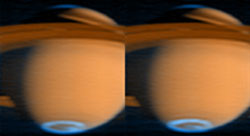This area deals with the fundamental laws and building blocks of nature and how they interact, the properties and the behavior of matter, and research into space and time and their structures.
innovations-report provides in-depth reports and articles on subjects such as astrophysics, laser technologies, nuclear, quantum, particle and solid-state physics, nanotechnologies, planetary research and findings (Mars, Venus) and developments related to the Hubble Telescope.

Since the invention of the atomic force microscope (AFM) in 1986 by Nobel laureate Gerd Binnig, the tool has been employed to advance the science of materials in many ways, from nanopatterning (dip-pen nanolithography) to the imaging of surfaces and nano-objects such as carbon nanotubes, DNA, proteins and cells. In all these applications, the quality and integrity of the tip used to obtain the images or interrogate materials is paramount.
A common problem in atomic force microscopy is

Airline pilots have an increased risk of nuclear cataracts [common type of cataract, associated with aging] compared with non-pilots, and that risk is associated with cumulative exposure to cosmic radiation, according to a study in the August issue of Archives of Ophthalmology, one of the JAMA/Archives journals.
Commercial airline pilots are reported to be at an increased risk for some cancers, but studies on the biological effects of their exposure to cosmic radiation have been l

Physicists at The University of Texas at Austin have discovered a new technique for cooling atoms and molecules that will allow them to study quantum physics more effectively with a greater variety of particles.
The researchers have found a way to use lasers to form walls that allow atoms and molecules to pass through in one direction, but do not allow them to return.
The technique could lead to advances in atomic clocks, which are used to standardize time worldwide.

MARSIS, the sounding radar on board ESA’s Mars Express spacecraft, is collecting the first data about the surface and the ionosphere of Mars.
The radar started its science operations on 4 July 2005, after the first phase of its commissioning was concluded on the same day. Due to the late deployment of MARSIS, it was decided to split the commissioning, originally planned to last four weeks, into two phases, one of which has just ended and the second one to be started by December th

New images of Saturn obtained by a University of Colorado at Boulder-led team on June 21 using an instrument on the Cassini spacecraft show auroral emissions at its poles similar to Earth’s Northern Lights.
Taken with the Ultraviolet Imaging Spectrograph aboard the Cassini orbiter, the two UV images, invisible to the human eye, are the first from the Cassini-Huygens mission to capture the entire “oval” of the auroral emissions at Saturn’s south pole. They also show similar emissio

The difficulty of detecting the presence of explosives and chemical warfare agents (CWAs) is once again all too apparent in the news about the London bombings.
In a significant breakthrough, researchers at Northwestern University’s Center for Quantum Devices have demonstrated a specialized diode laser that holds promise as a weapon of defense in both civilian and military applications. Once optimized, the tiny laser could quickly detect explosives and CWAs early and warn agai